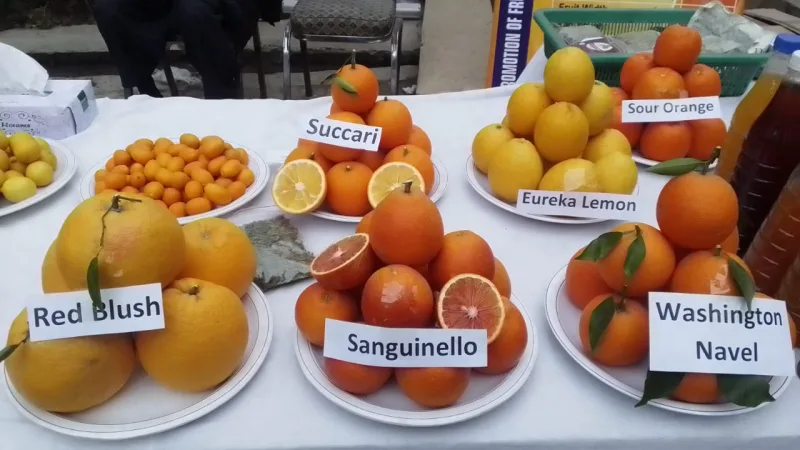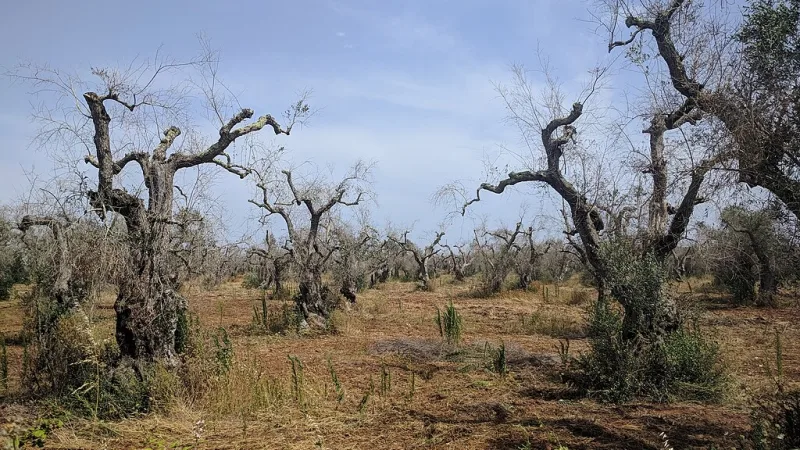These animals sound like they’re from a fantasy world, but they’re real!

Fantasy creatures have been a part of our stories for a long time. Classics like The Jungle Book and Harry Potter have talking animals and mythical creatures. Even though we haven’t found any giant talking snakes or fire-breathing dragons, there are some animals that look like they’re straight out of a fantasy. Here are five of them.
Vampire Deer

Erni | Shutterstock.com
Despite their name, vampire deer are gentle creatures that feed on vegetation. These animals got their nickname from their long fangs, which resemble antlers. Male vampire deer use their fangs as weapons to defend themselves from predators. These deer are also sometimes used as objects of sexual attraction to win over potential mates.
Vampire deer are some of the smallest species of deer, rarely growing more than 3 feet (1 meter). They originated in South and East Asia but were imported to Great Britain in the 1870s and displayed as exotic zoo attractions across different parts of the world. According to a recent survey by the Wildlife Conservation Society, the vampire deer is listed as an endangered species on the International Union for Conservation of Nature (IUCN) Red List due to habitat loss and hunting.
Narwhal

Narwhal | Wikipedia
Narwhals are a species of whale that belong to the Monodontidae family, which also includes belugas. These creatures are nicknamed “unicorns of the sea” due to the large tusk that protrudes from the head of male narwhals. This tusk can grow up to 3 meters in length and is present in only 15% of female narwhals. The tusk is actually an enlarged tooth that is filled with millions of nerve endings. This allows the narwhal to have an enhanced sense of touch and taste. They can use the tusk to sense changes in water temperature and salt levels, as well as to feel the presence of squid, shrimp, and other prey. New research suggests that male narwhals may use the tusk to attract mates, in a similar way to how peacocks use their feathers.
The gray color of narwhals is thought to be the reason for their name. “Nar” is a Norse prefix that means “corpse,” which is fitting for the pale color of narwhals. “Hval” is the Norse word for “whale.” As rising temperatures and human activity continue to threaten the existence of narwhals, there is hope that we may be able to save them by conservation efforts.
Komodo Dragon

Credit: David Clode | Unsplash
The Komodo dragon may be the closest thing we have to a real-life dragon, minus the wings and fire-breathing capabilities. These giant lizards bear much resemblance to the mythical creature with their long tails, yellow forked tongues and the ability to take down any prey (including humans) with their sharp teeth and venomous bite. In fact, Komodo dragons are known to be the largest lizards in the world, with the average Komodo weighing around 154 pounds (70 kilograms) and growing to a length of around 10 feet (3 meters). The lizard’s appetite is equally as remarkable, with its stomach enabling it to consume over 80 percent of its own body weight in a single meal. Komodo dragons also have impeccable throat muscles that allow them to devour large chunks of meat, and they’ll eat anything from live prey to carrion.
Western scientists recorded the dragon’s first appearance in 1910 when Lieutenant van Steyn van Hensbroek set out to explore rumors of a land crocodile on the islands of Indonesia. This resulted in van Hensbroek catching and killing a six-foot-long Komodo, which later became popularized as a “dragon” due to its appearance. However, fossil records show that the lizard may have originated in Australia over 4 million years ago before crossing the sea to make its home in the Komodo Islands of Indonesia. The dragon recently entered the IUCN’s list of endangered species due to rising sea levels threatening the low-lying savannahs in which the animal lives. The Komodo dragon is an impressive creature, and its recent endangered status is a cause for concern.
Spiny Bush Viper

Spiny bush viper or Atheris hispida | Wikipedia
The spiny bush viper is an incredibly venomous snake that can be found nestled in the flowers of trees in the forests of Central Africa. The snake comes in all sorts of different colors, including green, blue, brown and yellow. Its scientific name, Atheris hispida, means hairy and tailed, accurately capturing the animal’s dorsal spiny scales that spread across its rather thin and slender body. The venom from this creature can lead to serious hemorrhaging of internal organs. Their tails also make the spiny bush viper incredible climbers, allowing them to slither up and down branches to hunt their prey.
Luckily, the spiny bush viper is nocturnal and remains hidden deep in the secluded rainforests of Africa, thereby limiting human interaction. For now, the snake is happy to feed on accessible mammals such as frogs, lizards and sometimes birds.
Dracula Parrot

Pesquet’s parrot or Dracula parrot | Wikipedia
The Dracula parrot, also known as the Pesquet’s parrot, is a gothic creature with jet black feathers and a scarlet red belly. The parrot is found in the hills and rainforests of New Guinea and is rather large, measuring about one and a half feet (1 meter) from tail to beak. The one-of-a-kind parrot has a curved beak and a bald head that resembles vultures. The parrot prefers to hop from one limb to the other instead of flying. While the unfortunate name and garish looks of the animal may frighten you, rest assured that the parrot feeds on mostly figs and not blood.
The mystifying bird has been classified as vulnerable according to the IUCN’s Red List due to habitat loss as well as hunting. The parrot’s unique feathers are highly prized by collectors and therefore make the rare bird a treasured target. Currently, about 20,000 to 50,000 Dracula parrots roam the wild, though their population continues to decrease.






